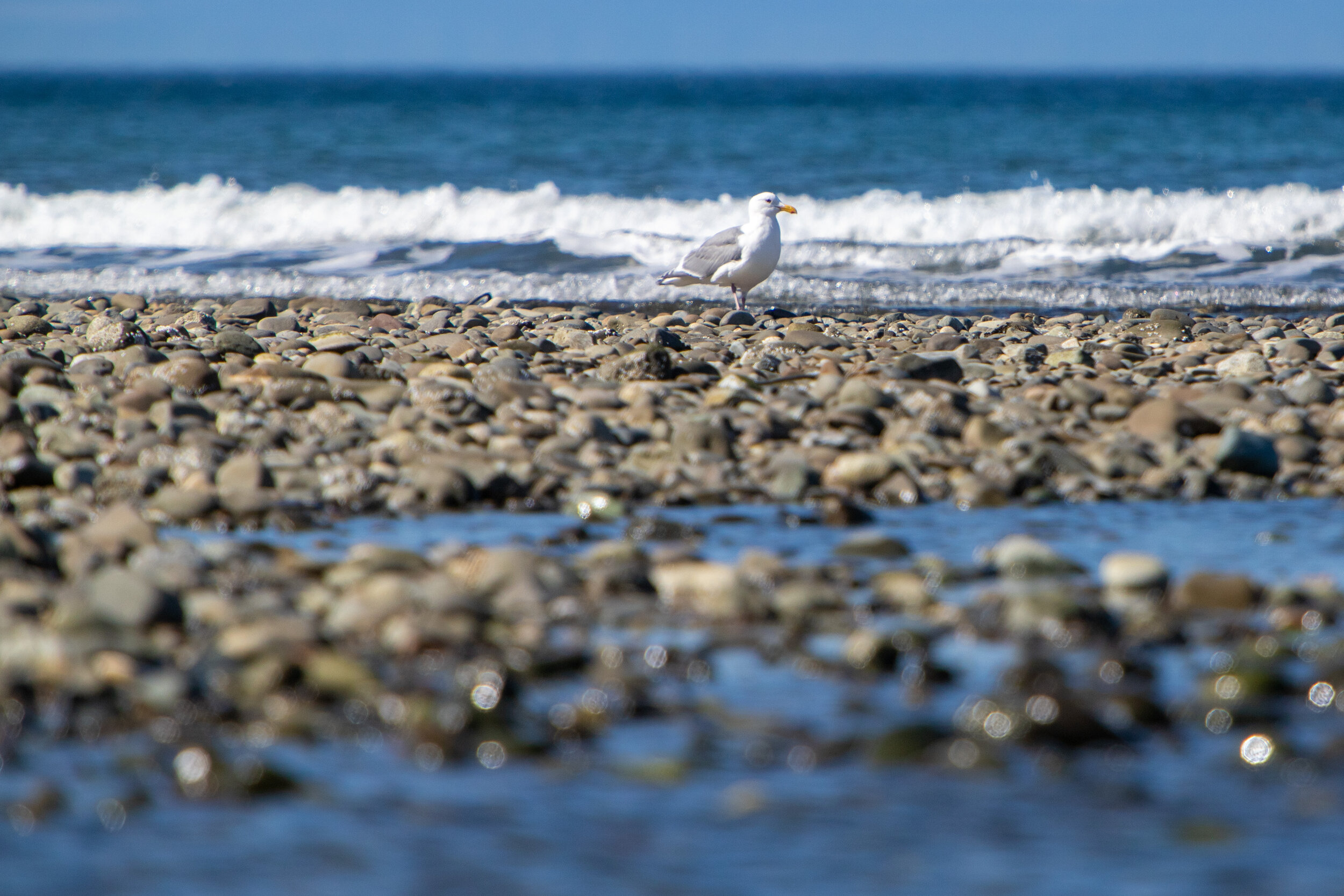Surf smelt are small fish that play a big role in the food chain, serving as a key food source for sport fish, including the salmon that feed the endangered Southern Resident Killer Whales. They spawn near the shore in areas most vulnerable to land-based pollution.
We recently funded a project that will study smelt habitat, which is being encroached upon by development. The results could help us better understand and protect shorelines.
Ultimately the smelt embryos will be deployed in protective underwater cages, which will later be collected so they can be measured for pollution exposure in a lab setting.
Our photographer for the project, Gemina Garland-Lewis, joined the team last month as they set the field work in motion. We’ll share more as the projects finish up and results become available.
Aquaculturist Mark Tagal scans the scene at Twin Beach on the Olympic Peninsula, looking for birds or marine mammals that might signify surf smelt. His dog Seven is never too far away. Although it was a beautiful day on the Strait with a clear view of Vancouver Island, the smelt were nowhere to be seen here or on two other beaches Mark checked where they usually frequent at this time of year. By Gemina Garland-Lewis
A glaucous-winged gull rests onshore in a part of the beach where surf smelt like to spawn. The larger stones mixed with sand is a good environment for their embryos to form and stay safe. Mark keeps his eyes on a group of these birds to see if their behavior will hang from "play" to fishing. By Gemina Garland-Lewis
Mark Tagal collects gametes from surf smelt that have been caught by a local fisherman on the Strait of Juan de Fuca, mixing the sperm and eggs on the beach to fertilize them as soon as possible. By Gemina Garland-Lewis
Mark spots a surf smelt embryo on a small rock, the whole thing hardly bigger than a grain of sand. By Gemina Garland-Lewis
Surf smelt and the newly fertilized embryos getting ready for transport. By Gemina Garland-Lewis
Mark Tagal buries cages with two-day old surf smelt embryos on different beaches on Puget Sound to pilot the early stages of their project. Because of the smelt's ecology and life cycle, the cages must be placed just below the highest tide line so that they spend part of their time outside of the water, making them distinct from other kinds of forage fish that require constant submersion. Some cages are buried on cleaner beaches while others are placed on those that face more threats from pollution, and the embryos will be checked regularly as they develop to catch any developmental differences between the study sites. By Gemina Garland-Lewis







